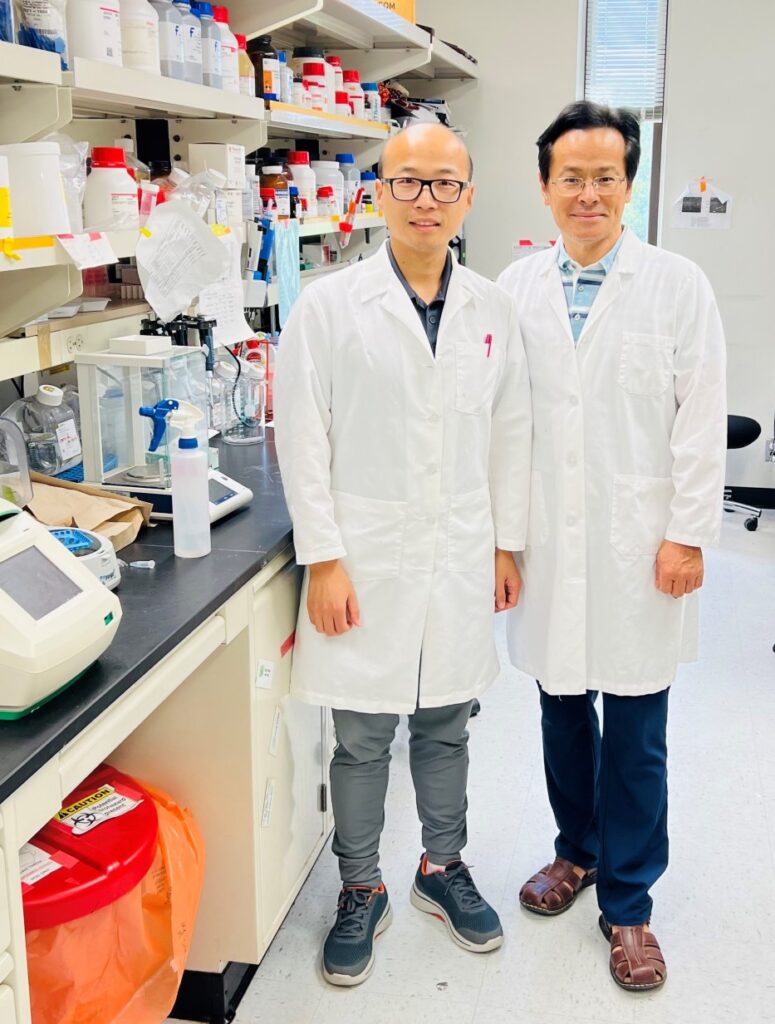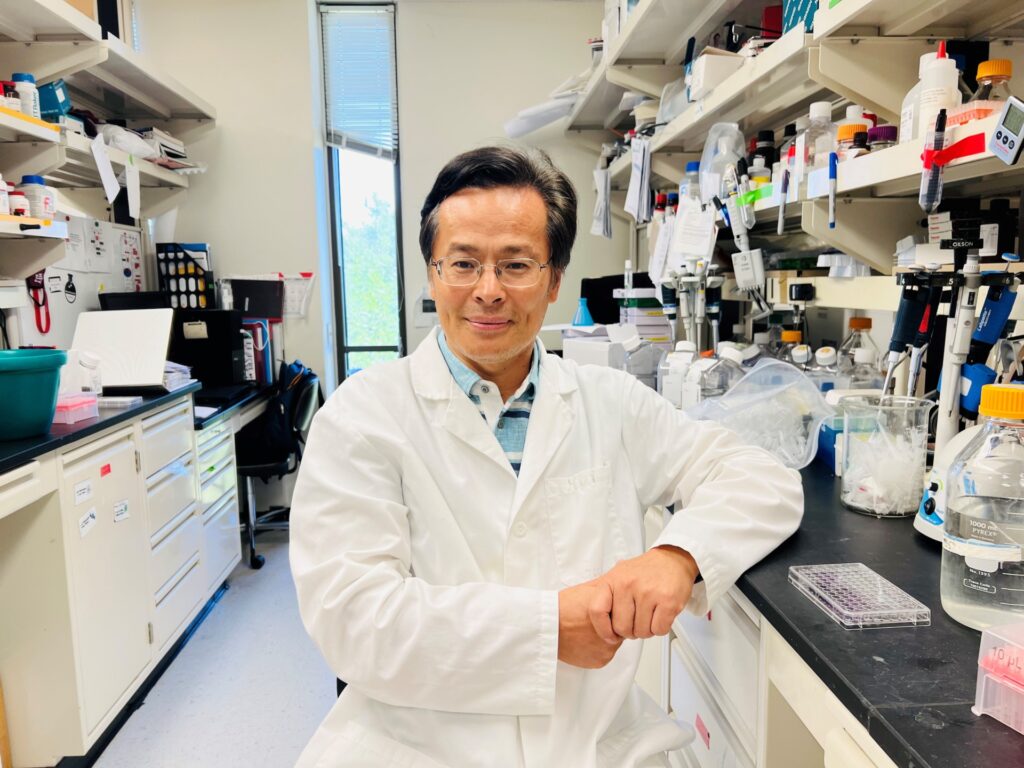Study provides new insights into Type 2 diabetes
Texas A&M AgriLife Research study shows new areas for potential development of effective therapies

New insights into the underlying mechanisms of Type 2 diabetes and novel potential therapeutic targets for the disease were revealed in a recent study by a team of Texas A&M AgriLife Research scientists in the Department of Nutrition at Texas A&M’s College of Agriculture and Life Sciences.
The study, “Hepatic p38α MAPK controls gluconeogenesis via FOXO1 phosphorylation at S273 during glucagon signaling in mice,” recently appeared in the journal Diabetologia. It was supported by the National Institute of Diabetes and Digestive and Kidney Diseases of the National Institutes of Health.
To better understand the study, principal investigator, Shaodong Guo, Ph.D., a professor and Presidential Impact Fellow, and Wanbao Yang, Ph.D., a graduate student and the study’s first author, both in the Department of Nutrition, provided the following information.
Why is it important to understand how the liver produces sugar?
Guo: A malfunction in how the liver produces sugar is known to be a major underlying mechanism in the development of Type 2 diabetes.
The pancreatic hormone glucagon increases liver glucose production while another hormone, insulin, suppresses it. Together, they control the body’s blood glucose balance.
FOXO1 is a protein important for regulating glucose production. It regulates cellular metabolism in the liver as well as in muscle, fatty tissue and the pancreas. It also promotes liver glucose production by activating certain genes. Additionally, the activation levels of the relevant genes are maintained by other proteins.
Why is it important to understand the role of glucagon?
Guo: Because glucagon increases the production of glucose in the liver, excessive glucagon action leads to high blood sugar levels in people with diabetes — and in mouse models of diabetes. Through this study, we wanted to get a better understanding of glucagon action because we feel knowledge of this action will be a vital component in developing efficient therapies for the treatment of diabetes.
Which molecular mechanisms did you focus on in this study, and why?
Guo: The focus of the study was a certain group of proteins that regulate how glucagon functions. Specifically, we looked at the underlying mechanisms by which certain members of the MAPK protein family, the p38 MAPKs, regulate the glucagon action that can lead to the high blood sugar levels found in Type 2 diabetes.

The p38 MAPKs are a class of proteins activated by stress, both environmental and intracellular stresses. During a period of severe stress, blood sugar rises in an evolutionarily preserved response that helps an animal to survive that stress. Enhanced production of glucose in the liver contributes to higher blood sugar levels brought on by stress.
During fasting, which is a type of stress, glucagon stimulates liver glucose production to provide fuel for organs such as the muscles and brain.
In the study, we investigated how p38 MAPK family members regulate glucagon action. We also looked at the function of the FOXO1 protein.
How was the study conducted?
Guo and Yang: Genetically engineered mice were used and tested for their tolerance to pyruvate, which is the final product of glycolysis, as well as for glucose and insulin tolerance. Additionally, we analyzed the mice’s liver gene expression profiles and took measurements of their serum triglycerides, insulin and cholesterol levels.
What were some of the main findings?
Yang: We found that one of the p38 MAPK class members, p38α MAPK, makes the FOXO1 protein more stable, which, in turn, promotes liver blood sugar production in response to glucagon stimulation.
Dysfunction in the FOXO1 protein may lead to metabolic disorders, including diabetes. The discovery that p38a served as a stabilizing force and promoted liver glucose production was an important one.
The study also revealed that both in individual liver cells and in mice, hepatocytes — specialized cells that represent nearly 80% of the total liver mass — hindering p38α MAPK decreased FOXO1 protein levels and impaired both glucagon- and fasting-induced liver glucose production.
Guo: We also discovered that a small mutation in the FOXO1 protein, the change of a serine amino acid to an alanine, eliminated the effect of p38α MAPK inhibition on hepatic glucose production. This mutation decreased glucose production, improved glucose tolerance and increased insulin sensitivity in mice placed on a high-fat diet intended to make them obese.
How can study results be applied to help treat Type 2 diabetes?
Guo: The findings indicate that p38α MAPK is a major player in regulating glucose levels, and the p38α-FOXO1 signaling pathway is a potential therapeutic target for the treatment of Type 2 diabetes.
Specifically, inhibiting p38α MAPK could lead to improved glucose balance in humans with Type 2 diabetes. Our results also indicate that FOXO1 phosphorylation is a key in the development of Type 2 diabetes. Therefore, inhibiting this phosphorylation could be a therapeutic strategy.
We also found that glucagon activates p38α through the protein Epac2 signaling in hepatocytes. This signaling could be another area to investigate for a possible therapeutic intervention.
Are there any limitations to the study?
Guo: While the study shows the relevance of p38α-FOXO1 signaling in models of diabetes, further investigation is still needed on whether such signaling is activated in humans with Type 2 diabetes.
This study goes far in providing additional insights into the biochemical mechanism that underpins the development of Type 2 diabetes and in identifying components that may be potential targets for the therapeutic treatment of this disease.
However, while our results made and hinted at important connections that may lead to developing even more effective therapeutic treatments, much still needs to be done to identify those specific treatments.


